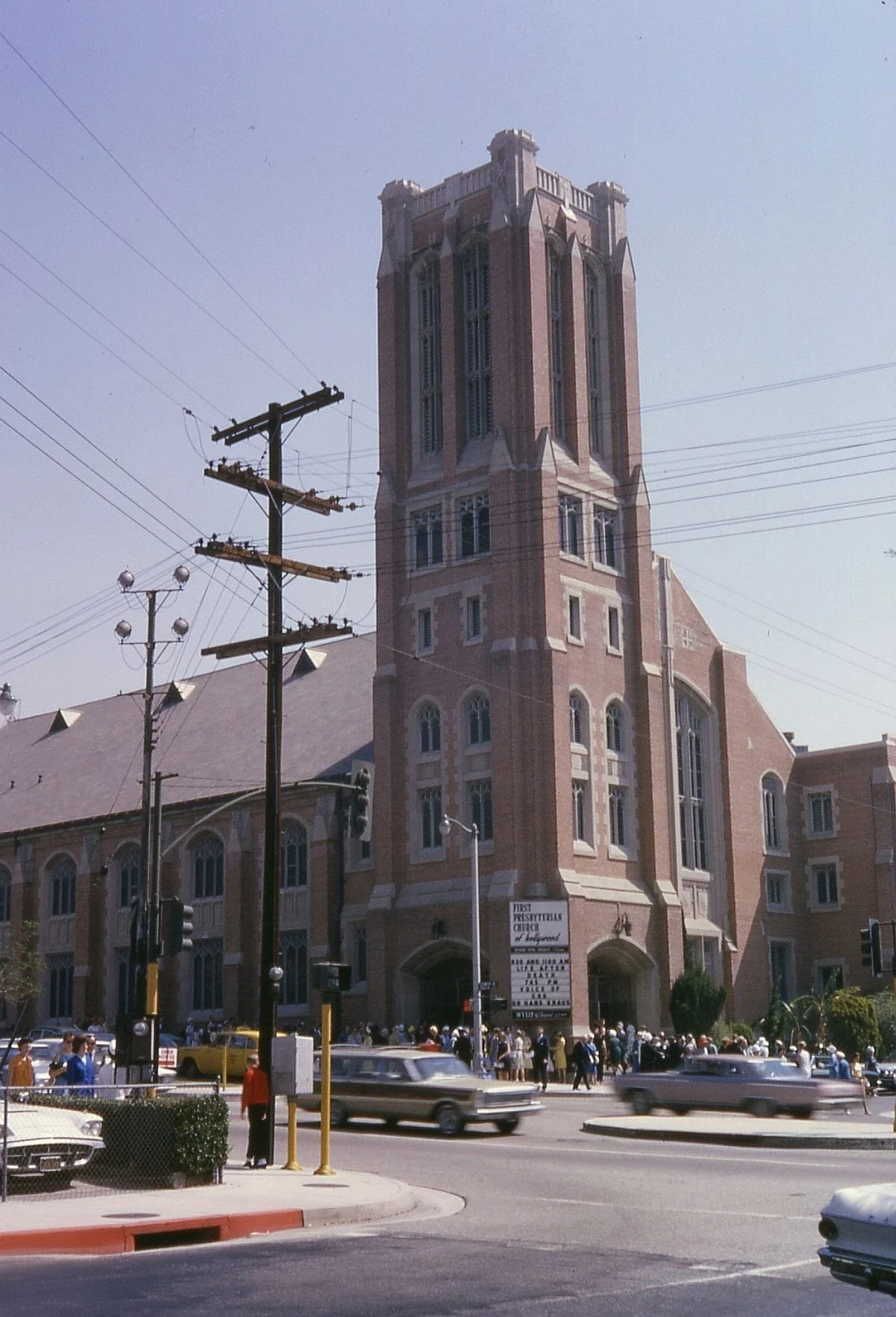I've been thinking about clothes that don't quite fit.
If I wore them very low on my waist, the gray slacks I’d worn to my high-school graduation two years earlier almost touched the tops of my black loafers. The white shirt and tie were fine, so all I needed was a proper jacket. I’d been invited to a party with friends from the large college group at my church, mostly upper-middle-class kids, so I wanted to look my working-class best. I didn’t have a sports coat or the money to buy one, so I searched through the small closet I shared with my father and younger brother and found a suit jacket Dad seldom wore. It was dark blue with thin white pin stripes; the sleeves didn’t quite reach my wrists, but it would have to do.
BECOME A FREE SUBSCRIBER TO I’VE BEEN THINKING
The two-story home of my friend who was hosting the gathering was in Larchmont, a tony neighborhood just south of where I lived in Hollywood in a three-bedroom, nine-hundred square foot stucco house with my parents, my brother, my three sisters, and my grandfather. I was welcomed at the door by a group of pals and made my way into the huge den where the party had started.
In a round of handshakes and hugs, a girl I admired for her beauty and envied for her class, embraced me then stepped back to look at me. “You know this coat doesn’t match your slacks, right?” she said. “And it doesn’t really fit you.”
That’s all I remember of the evening, but her comment found an immediate home in my vulnerable soul and the message was clear: You don’t really fit in, you’re not one of us.
Years later, when our two sons were fifteen and nine years old, they were chasing one another through our home. Our elder son raced through the kitchen and out the French door full of small glass panes that led to the patio, slamming the door on his brother who thrust his arm at the door to protect himself. Three long incisions burst open on his forearm, blood spread; we got him to the emergency room where they stitched him up. The wounds healed in time, but the scars never disappeared, keloid scars of raised, smooth flesh as if three caterpillars made their home under the skin of his forearm. They didn’t hurt but if he ran his finger over them, they were permanent reminders of the consequence of one of his many childhood romps with his older brother.
My soul is lined with keloid scars from early experiences of not fitting in. These memories no longer hurt, but if I run my soul’s fingers over them, I remember times when I was deeply cut by my circumstances. When I trace them, I remember what that fear felt like, reliving the humiliation of enduring two more hours in that party’s crowd with too-short sleeves.
The clothes weren’t really the problem, after all. They were a symbol of where I came from, a visual representation of the world I was trying to leave behind. It was excruciating to know that others could see it as clearly as I felt it.
First Presbyterian Church of Hollywood (August 1964)
Until I was nine years old, I lived in an extended family of working-class children of the Great Depression –I thrived in the crowd of boys playing baseball in the street, sleeping in homemade tents in the backyard, and constant clan barbeques and birthday parties with too much alcohol and not enough money.
When I was ten, my family of thirteen (my immediate family plus my grandfather, my aunt and uncle and their two sons, and a friend of the family) moved into a five-bedroom house surrounded by the massive buildings of the First Presbyterian Church of Hollywood.
On the second afternoon after we moved in, I discovered that the church had a gym. I found there a strange, contrary family to the one I lived in. Respect for one another and especially for adults was important. There was a proper way to dress especially for Sunday school which I was soon attending, and a devotion to the value of education that was barely articulated in the jumble of my family’s values which focused largely on having enough to eat and enough at the end of each month to pay the rent.
Within a year or two, I had become one of the leaders of my new church peer group. By the time I was in college and headed for seminary, one of the teachers in our huge college group, after a lesson on Moses leading the Israelites out of Egypt, asked me, “Are you going to be a Moses, Rick?” I assumed that was my spiritual destiny.
I graduated from high school with a C grade-point average and after two years at a state college, made my way into UCLA. I didn’t want to be caught not having read the right books, so with more anxiety than comprehension, I read Dostoyevsky’s Crime and Punishment, Goethe’s Sorrows of Young Werther, Camus and Sartre and plays from the theater of the absurd and, for the first of several times, The Great Gatsby. While many of my church friends had parents who paid for their education and for their sorority and fraternity dues, I worked at several jobs.
That’s when I was invited to that party with my church friends, and the humiliation of that evening brought to the surface this inner sense of myself that was in contradiction to whatever accolades I received. As much as I coveted the call to be another Moses or to read the right books, I was the guy at the party whose jacket didn’t match his slacks. I was the person whose clothes didn’t fit, and who didn’t fit in.
When I look back now at that evening’s party and trace its impact – and what must include dozens of other such moments now dim in my memory – I realize how it drove me to climb out of that humiliation. That evening depressed me for days, until for reasons I’ve never understood I decided I was never going to allow myself to be so humiliated again. Even a hint of not fitting in, of not being good enough, fueled a commitment in me to climb out of the world I’d come from, and to never let a hint of that seep into the person I was trying to hard to become.
After Arthur Ashe, a fellow UCLA alumnus, won the 1968 US Open and made tennis a more popular sport, I bought a racket, found a foursome to play with, took lessons, and became a respectable player for thirty-five years. When American runner Frank Shorter won the 1972 Olympic marathon and ignited a running craze, I bought the shoes and shorts and singlets that were required, met a friend at a local high school track and ran ten kilometers every afternoon, often ran five miles on the streets on weekends, and was in the best shape of my life. I was never any more skilled as a runner than I was as a tennis player; it was my wife who ran four marathons and friends who competed in triathlons. But I was a runner and looked the part, and I could talk about personal bests and training routines with those in the runners’ world. I could fit in.
It took decades to earn enough money to dress well; I spent too many years in jeans and tee shirts and inexpensive dress clothes. But as soon as I could afford it – actually, before I could truly afford it – I was buying clothes with designs and colors subtle enough to look expensive without appearing gaudy. I’m still comfortable around home in jeans and tee shirts, but I have a closet full of shirts and sweaters that affirm my ability to dress as I please. My slacks are long enough and none of my jackets have sleeves that are too short.
Humiliation can crush a person, reduce their confidence to ashes. I’m thankful that I have had the opposite reaction. I stood in the ashes of that party’s shame but never sat down in it, never let the humiliation become my home.
Grit? Persistence? Fear of further shame? I don’t know which of these (all of them, or motives I’ve yet to discover) fueled my decision, but I gathered what was left of my pride, stood up, and climbed into eventual satisfaction with who I am. The keloids are there as a reminder, but I no longer feel so sharply the pain that caused the scars.




